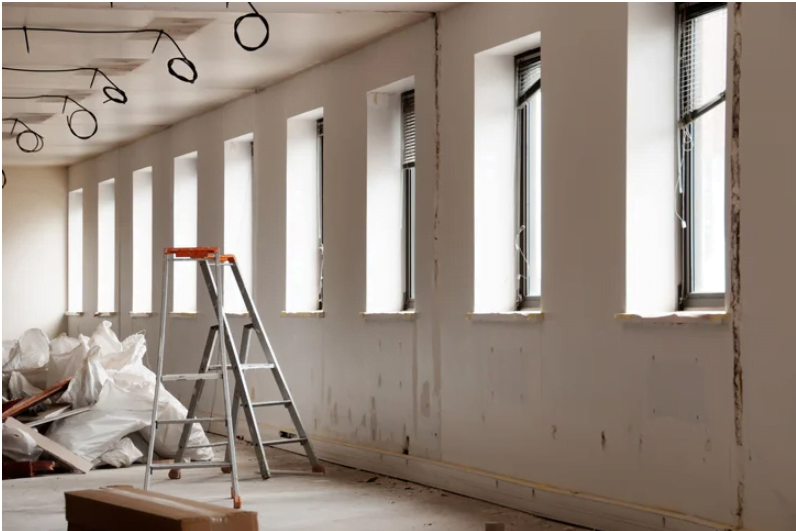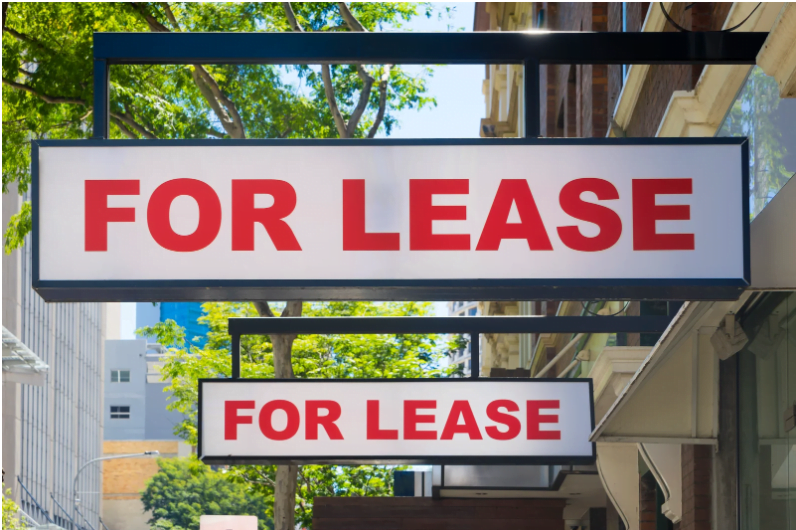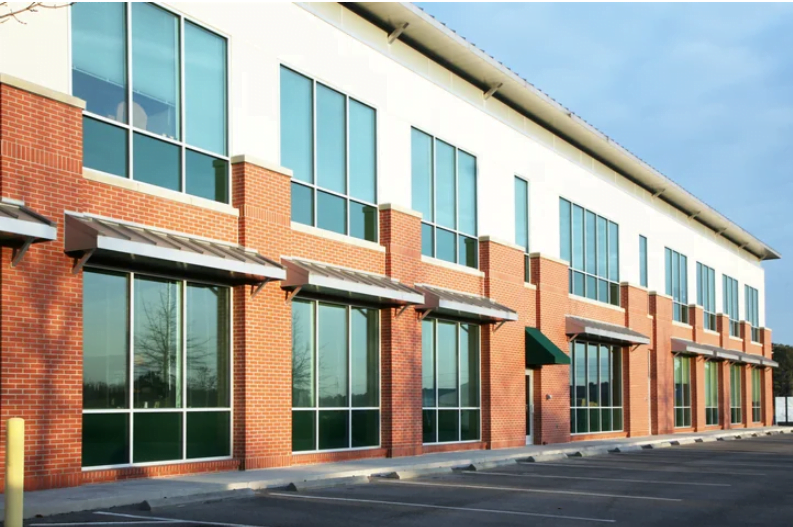
by Prince Licaylicay | Jun 25, 2020 | All Articles, Leasing
A commercial lease agreement can feel intimidating, especially for those who don’t work with real estate often. However, carefully reading the entire lease is essential to securing the best deal for your office space. While all parts of the lease matter, certain terms require special attention.
The last thing you want is a surprise when it’s time to pay rent. Therefore, review the rent terms carefully. Are there any additional fees on top of the base rent? When is the rent due, and how should you pay it? Furthermore, check the common area maintenance fees and what they include. Knowing what isn’t covered is equally important before you sign the lease.
2. Right of First Refusal
When you find the perfect office space, you’ll want the chance to stay when your lease ends. A right of first refusal clause ensures that your landlord offers you the option to renew before offering the space to other tenants. This clause gives you priority, helping secure your space for the long term.
3. Definition of the Premises
This section explains exactly what space you’re renting. Ensure the square footage of the office is listed correctly. Additionally, if the landlord has promised access to shared areas, like restrooms, a break room, or a reception area, confirm that these are included in writing. Verbal promises can easily be forgotten, so ensure everything is documented in the lease.
4. Subleasing and Assignment
If your business needs change and you no longer require all the space, subleasing or assigning the lease to another tenant can help reduce costs. Therefore, it’s essential to negotiate flexible subleasing and assignment rights. This way, you can adjust as needed without being stuck with unused office space.
5. Use and Exclusives Clause
Check if there are any restrictions on the type of business you can operate within the building. These restrictions could limit your ability to expand into new areas. Additionally, an exclusives clause can prevent competitors from moving into the building, which can be critical for certain businesses. Therefore, ensure these clauses align with your business goals.
6. Maintenance Clause
When something breaks, who is responsible for the repairs? The maintenance clause should clearly define who covers the costs and who arranges the repair work. A well-defined clause will help you avoid future disputes and ensure smooth operations in your office space.
Need assistance with your 1031 Exchange or DST? We’ve got you covered!
We’ve prepared a comprehensive, free e-book designed to guide you in achieving your long-term business goals or acquiring that dream property you’ve been eyeing.

Meet The LeveragedCRE Investment Team
Phill Tomlinson and Eric Butler are seasoned commercial real estate brokers with over 44 years of combined experience. They lead the LeveragedCRE Investment Team at Commercial Properties, Inc. (CPI) in Scottsdale, Arizona, specializing in investment sales and tenant/landlord representation across the Phoenix and Scottsdale submarkets.
The team leverages their extensive knowledge and expertise to help investors and property owners maximize their returns and navigate complex real estate transactions with confidence.
Stay informed with the latest in Commercial Real Estate strategies designed to enhance your income property investment results by bookmarking www.leveragedcre.com. Let us help you stay ahead in the market!

by Prince Licaylicay | Jun 18, 2020 | All Articles, Investing
Planning tenant improvement projects used to be simple — design rows of private offices with cubicles in front and don’t forget a storage room and reception area. Modern offices are much more variable. While the key to a successful project is to customize it extensively to your needs, there are still a few rules of thumb that can make any project better.
5 Tips to Planning Tenant Improvement Projects
Don’t Forget the Wires
Your users have spoken, and they love wireless devices. However, the more wireless devices that you have, the more you bump up against two basic problems:
1. Wireless devices need wires for power.
2. Wireless spectrum for both wi-fi and cellular data is limited.
The solution to these problems is easy. Provide as many traditional connections as you can. Power outlets allow your workers to stay juiced up, and adding traditional network wiring back into your tenant improvement projects can solve the bandwidth problem. While not every device will get plugged in, giving fat data pipes to shared equipment like printers, scanners and servers and to power users who have significant network utilization will make those devices work better. It’ll also also keep them off of the wireless network, conserving bandwidth for others.
Recycle When Possible
Many companies try to do their tenant improvement projects in a green fashion. However, many recycled materials cost the same or more than newly manufactured projects. If you’d like to go green and save green, reuse what is already in the space. Ceiling tiles, modern lighting fixtures, doors and the like from the previous tenant are frequently in good enough shape to be reused, saving you from both paying for removal and from purchasing new materials.
Be Open to Being Closed
Like many companies, you probably are considering an open floor plan build-out. An open tenant improvement plan is more flexible, less expensive to build and can bring productivity benefits. However, while you might want to keep your workspaces flexible and open, don’t forget to create defined spaces that will help make your workplace yours. This could include small meeting rooms, in-suite cafes, or any other closed areas that can both define spaces and define the groups that are using them.
Leverage LED Lighting
Advances LED lighting fixtures have two obvious benefits — they consume less power than other technologies and they are longer lasting, necessitating less maintenance over time. However, the newest LED bulbs have an additional benefit — the ability to change colors. Studies are starting to show that fixtures that mimic the shifting color of natural light over the course of the day have positive impacts on both employee health and productivity.
Look Up…. Once.
In a tenant improvement project, even a few dollars per square foot can make a difference. One way to save money and create cooler, more flexible space is to eliminate the traditional acoustic tile ceiling. Open ceiling offices aren’t just industrial-chic, though. The higher space feels larger, while the open space means that your maintenance team has one less thing to clean while having easier access to lighting, HVAC and wiring systems that run along the ceiling for repairs and retrofits.
Investing In Commercial Real Estate?
Even after outlining all the information above, investing in CRE can still seem daunting. That’s why the Leveraged CRE Investment Team at Commercial Properties, Inc. is here to help you achieve your investment goals. Contact us at (480) 330-8897 or send us an email at request@leveragedcre.com.
Need help on how to get started investing in commercial real estate? We got you covered! We prepared a free e-book that will serve as your guide to achieve your long-term business goals or obtain that property you’ve always been dreaming of!

Meet The LeveragedCRE Investment Team
Phill Tomlinson and Eric Butler are seasoned commercial real estate brokers with over 44 years of combined experience. They lead the LeveragedCRE Investment Team at Commercial Properties, Inc. (CPI) in Scottsdale, Arizona, specializing in investment sales and tenant/landlord representation across the Phoenix and Scottsdale submarkets.
The team leverages their extensive knowledge and expertise to help investors and property owners maximize their returns and navigate complex real estate transactions with confidence.
Stay informed with the latest in Commercial Real Estate strategies designed to enhance your income property investment results by bookmarking www.leveragedcre.com. Let us help you stay ahead in the market!

by Prince Licaylicay | Jun 11, 2020 | All Articles, Buying, Investing
Let’s examine what a cap rate is and how it allows investors to evaluate their rate of return. There are many ways to value real estate. It consists of appraising the land and building, comparing comparable properties, or calculating the value based on the rents being generated.
Cap Rate Play
The later method is where the capitalization rate (or “cap rate”) comes into play. The cap rate (expressed as the ratio of the property’s net income to its purchase price) allows investors to compare properties by evaluating a rate of return on the investment made in the property.
By examining the actual income (or rent) that the property generates and then deducting operating expenses (not including debt costs), the investor arrives at a property-level net operating income (or NOI). Once you determine the NOI, you simply divide that by the cost of the property or the price you are buying or selling the subject building for.
Calculating Cap Rate
While this method of valuation may appear simple, the use of the tool can be extremely valuable. Also, it’s important to mention that a Cap Rate does not show the full picture of the investment. It’s a only a snapshot of the first year’s returns and should not be treated as the only factor to consider.
In general, a lower cap rate indicates there is less risk associated with the investment (due to a stronger tenant, such as a national chain or increased demand) and a higher cap rates can be associated with higher risk alternatives.
Real estate investors rely upon a variety of types information when negotiating for income producing properties – for instance, the desirability of the property’s current location and/or any prospective changes in the neighborhood are two common factors.
Looking for more information on cap rates? Click HERE to be forwarded to a Wiki How article with great simple diagrams – enjoy.
Investing In Commercial Real Estate?
Even after outlining all the information above, investing in CRE can still seem daunting. That’s why the Leveraged CRE Investment Team at Commercial Properties, Inc. is here to help you achieve your investment goals. Contact us at (480) 330-8897 or send us an email at request@leveragedcre.com.
Need assistance with your 1031 Exchange or DST? We’ve got you covered!
We’ve prepared a comprehensive, free e-book designed to guide you in achieving your long-term business goals or acquiring that dream property you’ve been eyeing.

Meet The LeveragedCRE Investment Team
Phill Tomlinson and Eric Butler are seasoned commercial real estate brokers with over 44 years of combined experience. They lead the LeveragedCRE Investment Team at Commercial Properties, Inc. (CPI) in Scottsdale, Arizona, specializing in investment sales and tenant/landlord representation across the Phoenix and Scottsdale submarkets.
The team leverages their extensive knowledge and expertise to help investors and property owners maximize their returns and navigate complex real estate transactions with confidence.
Stay informed with the latest in Commercial Real Estate strategies designed to enhance your income property investment results by bookmarking www.leveragedcre.com. Let us help you stay ahead in the market!

by Prince Licaylicay | Jun 4, 2020 | All Articles, Selling
Your commercial property won’t sell, you listed your building up for sale and it simply didn’t sell. The first thing to do is to take a step back and analyze the situation. Try to assess what factors led to your property not selling. Below are the top four reasons why properties tend to languish on the market
Commercial Property Won’t Sell? Consider These Factors
(1) Is My Commercial Property Overpriced?
Overpricing your property is usually the number one reason it did not sell. The price of your property should be competitively priced with other buildings in your area which have similar features. Your real estate broker will help you establish the best price based on the competition.
Price reductions can be an issue in the pricing game. Many owners set an asking price above the market with the idea they will reduce the price as time goes on. However, doing this can mean being passed over by real buyers who end up purchasing comparable properties as the right price. By the time you reduce the price to where it should be, you & rsquo;ve lost access to the first round of buyers. You can counter this by making your price reduction extremely competitive.
Properly pricing your property is as much an art as a skill and your commercial real estate broker will help you assess the competition and help you establish an asking price that will get the property sold.
(2) What is the Condition of the Property
All of the cosmetic things, such as paint, landscaping, window coverings and flooring should be in good shape and the building should be spotless inside and out. It’s amazing how most buyers refuse to see through superficial, cosmetic shortcomings. And making these cosmetic improvements is relatively inexpensive. To get the building sold, make a small investment in landscaping. Make sure the lawn is in good shape and trees and shrubs neat and trimmed. Make sure walkways are clear. If you don’t have the time to do it, pay someone.
Exterior Make sure there is no chipping paint, dirty windows, or clutter. Most importantly, remember that most buyers will notice the condition of the front door when they walk in.
Interior Make sure the carpets are clean and attractive, the walls painted (if it needs it) and clean (no smudges.), the break room clutter-free and the windows are spotless. Also, remove excess furniture since excess furniture makes rooms appear much smaller. Make sure all clutter is off the floor and organized. And finally, make sure the smell of the building is appealing.
(3) Was Your Property Aggressively Marketed?
Another primary reason your commercial property won’t sell is a simple lack of exposure. In a very hot market, a listing in services like CoStar/LoopNet alone should generate an adequate number of buyers. However, if your market is anything less than red-hot, your building needs aggressive marketing.
Many buyers work with a commercial real estate broker. Your broker will make sure your property is exposed to the active buyer & rsquo;s brokers in your area through listing services, emails, phone calls and open houses. Also, most active brokers have a strong network of other brokers and buyers and can introduce your property directly.
(4) Did You Hire The Right Commercial Real Estate Agent?
Like any profession, there are very effective and ineffective commercial real estate brokers. Many commercial real estate brokers work hard and employ strong marketing techniques.
They have a strong network and access to buyers. Many work hard to get your building sold. However, many do not. Did your broker simply place the building in CoStar/LoopNet/Xceligent? Or, did she or he inform their network of buyers about your property? How about presenting your property at sales meetings both at her or his office and other company offices? Did she or he promote your property with email announcements, brochures, banners, and signage to showcase your property?
Ask yourself, was your broker passionate about selling your property? If not, now is the time to find the broker who will get your building sold.
Investing In Commercial Real Estate?
Even after outlining all the information above, investing in CRE can still seem daunting. That’s why the Leveraged CRE Investment Team at Commercial Properties, Inc. is here to help you achieve your investment goals. Contact us at (480) 330-8897 or send us an email at request@leveragedcre.com.
Need assistance with your 1031 Exchange or DST? We’ve got you covered!
We’ve prepared a comprehensive, free e-book designed to guide you in achieving your long-term business goals or acquiring that dream property you’ve been eyeing.

Meet The LeveragedCRE Investment Team
Phill Tomlinson and Eric Butler are seasoned commercial real estate brokers with over 44 years of combined experience. They lead the LeveragedCRE Investment Team at Commercial Properties, Inc. (CPI) in Scottsdale, Arizona, specializing in investment sales and tenant/landlord representation across the Phoenix and Scottsdale submarkets.
The team leverages their extensive knowledge and expertise to help investors and property owners maximize their returns and navigate complex real estate transactions with confidence.
Stay informed with the latest in Commercial Real Estate strategies designed to enhance your income property investment results by bookmarking www.leveragedcre.com. Let us help you stay ahead in the market!





